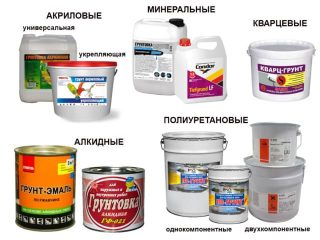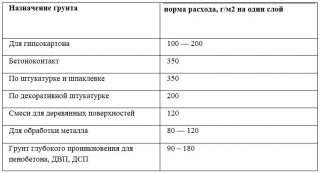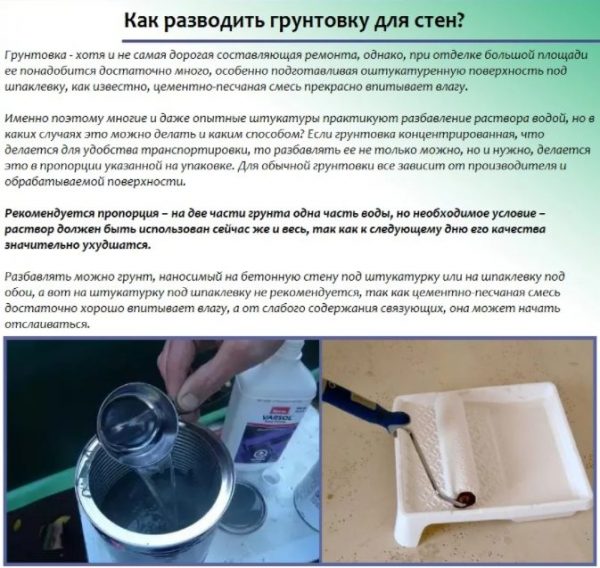Before painting or wallpapering, the surface of the walls requires processing to ensure a strong adhesion of the finish to the base. To do this, special compounds are applied to a flat cleaned plane. A primer for painting walls is selected in accordance with the purpose of the room and the characteristics of the main material.
Description and material properties
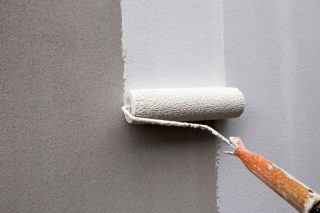
Construction primer is applied to the surface before finishing and before puttingty. Also, the composition is sometimes used when creating a self-leveling floor. The primer applied to the plane forms a very thin film on it.
The need for priming walls
Primers are needed to improve the quality of the finish... Penetrating into the top layer of the material, they adhere small dust particles, make the surface stronger and help improve adhesion, which is especially important for porous and fragile surfaces. Thanks to this, the decorative coating will retain its fresh look longer.
Primer characteristics
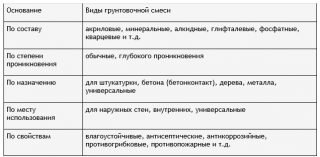
When selecting a composition need to pay attention for the following characteristics:
- the type of work for which the product is intended (outdoor or indoor);
- recommended temperature ranges for application and storage;
- types of surfaces for which the product is intended;
- shelf life (after its expiration, the composition should not be used);
- types of decorative and other coatings for which a primer can be used;
- the duration of the polymerization of the applied layer;
- consumption rate.
For bathrooms and other areas with a high content of water vapor in the air, a moisture-resistant primer should be used. It is better to purchase products from trusted manufacturers that have a certificate of conformity.
Varieties of primer
Exists several basic types primer compositions.
Universal
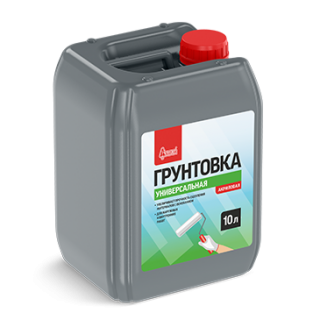
Primers can be applied for different types of finishes: plastering, painting, gluing tiles, wallpapering. Helps to reduce moisture absorption by walls. Well suited for application gypsum plaster, preventing the coating from cracking.
When working with glue the primer increases the curing time, so that the master does not need to rush when installing wallpaper or tiles. Such formulations are best suited for substrates with a high degree of porosity, for example, aerated concrete.
Adhesive
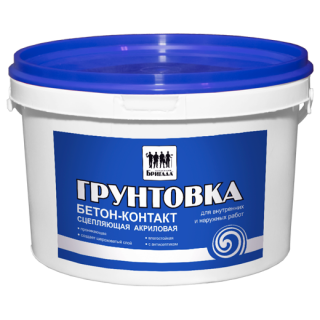
Compounds with sand or mineral chips roughen the surface.
Are used for preparation of walls of prefabricated concrete houses for the application of plaster based on cement or gypsum.
Adhesive primers are especially combined with gypsum, as it quickly gives off moisture, which, under certain conditions, can lead to shedding of the coating from the walls. Rough particles and the film created by the soil prevent this.
With loose and non-absorbent bases, such compositions should not be used. Also, most brands of such primers are not suitable for tiling, because the adhesive creates better adhesion to the surface than primer, which can cause delamination.
Deep penetration
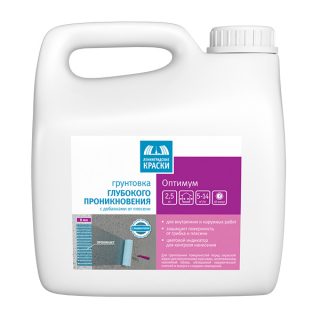
Priming impregnates the base to the greatest depth. Available as a ready-to-use liquid and in the form of a concentrate. Such compositions contain polymer additives (most often styrene and acrylic). These compounds penetrate and bond with the base, which helps to strengthen the base and make it less porous. The effects persist even after the applied layer dries.
Often these products contain additives, preventing contamination of the base with fungus and mold... Deeply penetrating soils are used with concrete, brick and block bases... They cannot be used with wood, metal and plastic.
For plastering primer color not fundamental, but for painting it should be white. It should be applied, depending on the degree of porosity of the base, in 1 or 2 layers. In this case, do not overdo it, since an excess of polymer components can reduce adhesion.

Criterias of choice
When buying a composition, you need to pay attention to its material compatibility and the characteristics of the substrate, as well as the coating used. Has the meaning, for what types of premises the primer is intended.
Surface type
- Primer acrylic for walls is fast drying. There are options for it that are also suitable for wood.
- Vinyl acetate compositions are intended for the kitchen and bathroom. They tolerate moisture well, do not emit harmful compounds.
- Priming mineral based has good leveling properties, can be used with expanded clay and plastering compounds.
- Products on perchlorovinyl it is distinguished by the fastest drying and resistance to temperature extremes, but it releases toxic substances.
With metal and wood bases use alkyd soils. Some of them contain glycerine additives that prevent corrosion processes. With drywall and plaster mixes these soils should not be used.
Room type
It is necessary to pay attention to what types of work the primer is intended for - indoors or outside the building... In the first case, it is also important in which rooms it can be used (in residential, kitchen or bathroom). For outdoor work, it matters temperature range, at which walls can be processed. The type of coating applied on top is also taken into account (water-based paint, plaster, varnish, etc.).

Primer application rules
Calculation of the amount of material
- if it is very porous, the figure will be large - 0.2-0.25 kg per 1 m²;
- when applied over putty - 0.05-0.12 kg;
- by plaster composition - 0.1-0.16 kg;
- adhesive primer on smooth concrete - 0.25 l per 1 m².
Preparation of the composition
Method for preparing the primer mixture also indicated on the packaging. Many primers come to the market ready-made, which do not require any preliminary operations before application. Concentrated primers require preliminary dilution. It is important to pay attention to the recommended application temperatures.
Before starting work, you need protect the respiratory system and skin.
Surface preparation
From the surface remove dust, dirt, flaking fragments the old cover. Small cracks close up putty, large - plaster. If the wall has already been painted and filled, it polished. This process should not be carried out dry, as this produces dust, which may contain harmful compounds. Therefore, it is best to do wet sanding.
Before priming, you need let the wall dry completely... The floor and furniture are covered with plastic wrap to protect against ingress of the composition and fixed with tape.
Padding
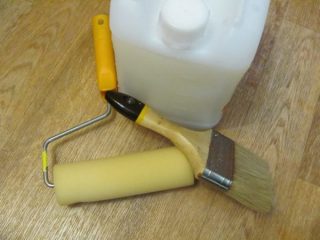
The primer application temperature is indicated on the packaging. Typically the range is approximately from +5 to +30 degrees... A brush and roller are used as tools. Most often, one layer of soil is sufficient, but if the base is very porous or crumbling, it is advisable to apply a second one.
First, brush the joints of the walls, corners and areas near them with a brush. Then they begin to work with a roller with movements from the bottom up. In this case, the composition should not drain from the instrument. Smudges must be carefully smoothed out. As a result, the layer should turn out to be even, without drops and defects.


